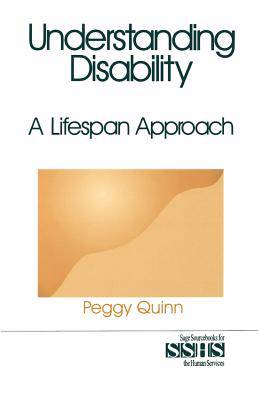
- Afhalen na 1 uur in een winkel met voorraad
- Gratis thuislevering in België vanaf € 30
- Ruim aanbod met 7 miljoen producten
- Afhalen na 1 uur in een winkel met voorraad
- Gratis thuislevering in België vanaf € 30
- Ruim aanbod met 7 miljoen producten
Zoeken
Omschrijving
Over the past 30 years, attitudes toward people with disabilities have changed dramatically, moving from deinstitutionalization in the 1960s to the Disability Rights Movement of the 1970s and the Americans with Disabilities Act of 1990. The results of this shift have been to move more and more people with disabilities into mainstream activities in their communities. Social workers and other health and mental health professionals are now encountering people with a wide range of disabilities at various stages of their lives. It is important to be prepared. Understanding Disability details expected developmental stages for those without disabilities as well as the impact of disability at each of these periods. This is a much needed reference for working with a person with a disability, or with a family member or other interested party. Beginning with infancy and the diagnosis of congenital or early onset disabilities, the book identifies traditional developmental life stages and then provides specific information for four different disabilities: Down syndrome, visual impairment, cerebral palsy, and spina bifida. In addition, spinal cord injury is added at the young adult stage of some adapted expectations. In keeping with a social work emphasis on strengths, the book is based on a social, rather than medical, model of disability. The information in this book allows the social worker to create treatment plans, coordinate with other professionals, and competently assist the person with the disability and his/her family. Filling the void in literature on disabilities since the Disabilities Act of 1990, Understanding Disability will be a most valuable resource for social workers, counselors, and nurses.
Specificaties
Betrokkenen
- Auteur(s):
- Uitgeverij:
Inhoud
- Aantal bladzijden:
- 256
- Taal:
- Engels
- Reeks:
- Reeksnummer:
- nr. 35
Eigenschappen
- Productcode (EAN):
- 9780761905271
- Verschijningsdatum:
- 11/09/1997
- Uitvoering:
- Paperback
- Formaat:
- Trade paperback (VS)
- Afmetingen:
- 108 mm x 215 mm
- Gewicht:
- 349 g

Alleen bij Standaard Boekhandel
+ 558 punten op je klantenkaart van Standaard Boekhandel
Beoordelingen
We publiceren alleen reviews die voldoen aan de voorwaarden voor reviews. Bekijk onze voorwaarden voor reviews.








